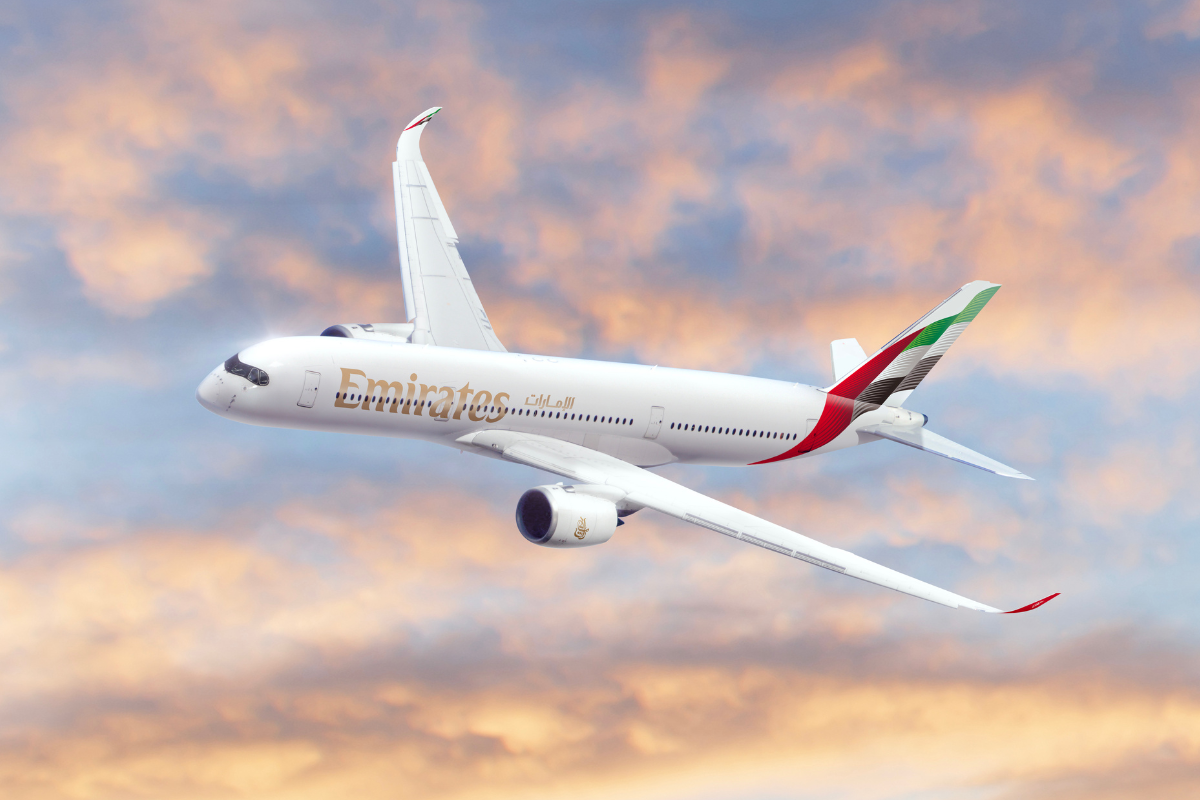
Emirates has just announced the first nine destinations for its brand new Airbus A350-900 aircraft, which will be delivered to the Dubai-based carrier in the next few months and will feature the airline’s eagerly anticipated ‘next generation’ Business Class seat.
The inaugural destination for Emirates’ first-ever Airbus A350 will be Bahrain on September 15 – a short one-hour flight which doesn’t come close to testing the A350s long-range capabilities but which will be perfect for crew familiarisation flights.
The A350 will also be deployed on one of the Emirates’ four daily flights between Dubai and Kuwait City from September 16, followed by some slightly longer regional flights to Mumbai and Ahmedabad from October 27.
From November 4, Emirates will then deploy its A350 on long-haul flights to Europe, starting with flights to Edinburgh – a route that is being reopened as a result of the A350 joining the Emirates fleet.
The A350 will also be used on two other secondary European routes from December 1, with Lyon and Bologna being served by the aircraft. One of Emirates’ daily Muscat flights will also be served by the A350 on the same date, while a fourth daily flight to Colombo will be operated by the A350 from January 1, 2025.
| Destination | Flight number | Launch date |
|---|---|---|
| Bahrain (BAH) | EK839/840 | 15th September |
| Kuwait (KWI) | EK853/854 | 16th September |
| Mumbai (BOM) | EK502/503 | 27th October |
| Ahmedabad (AMD) | EK538/539 | 27th October |
| Edinburgh (EDI) | TBC | 4th November |
| Bologna (BQI) | EK93/94 | 1st December |
| Lyon (LYS) | EK81/82 | 1st December |
| Muscat (MCT) | EK866/867 | 1st December |
| Colombo (CMB) | EK654/655 | 1st January 2025 |
Emirates plans to take delivery of ten A350s by the end of next March – one-fifth of the airline’s initial order of A350s. The aircraft will feature 32 ‘next generation’ Business Class seats in a one-two-one configuration featuring all-aisle access, 21 Premium Economy seats and 259 Economy seats.
Although the A350-900 has a maximum range of 9,500 nautical miles, Emirates will use its A350s, at least initially, as a regional workhorse across the Middle East and West Asia and Europe because of its “superior operating efficiency and flexibility” compared to the A380 superjumbo and Boeing 777-300s.
The fact that the A350-900 won’t feature a First Class cabin means that Emirates probably intends to restrict the aircraft to secondary cities where there isn’t much demand for First Class or one regional routes with multiple flights a day where First Class will still be available on other services.

Emirates hasn’t released any further details about its A350 cabins, although we already know that the airline will spend $350 million installing the Thales AVANT inflight entertainment system with 4K QLED HDR screens, delivering 5,000 channels and a wider range of live TV options.
The aircraft will also have high-speed WiFi available delivered by Inmarsat’s Global Xpress satellite network, which promises “uninterrupted global connectivity” even over the North Pole.
The A350 also features the largest overhead bins in the industry, and mood lighting is designed to help reduce the effects of jet lag. Compared to Emirates’ fleet of Boeing 777s, customers should also notice that the A350’s humidity levels prevent their skin from drying out quite so quickly.
Emirates has a total of 65 A350-900s on order after Airbus won an additional order from the carrier during the Dubai Air Show last November. Airbus had been hoping to win an order for the larger A350-1000 model, but Emirates president Sir Tim Clark still has concerns over the plane’s Rolls-Royce XWB-97 jet engines.
Mateusz Maszczynski honed his skills as an international flight attendant at the most prominent airline in the Middle East and has been flying ever since... most recently for a well known European airline. Matt is passionate about the aviation industry and has become an expert in passenger experience and human-centric stories. Always keeping an ear close to the ground, Matt's industry insights, analysis and news coverage is frequently relied upon by some of the biggest names in journalism.







